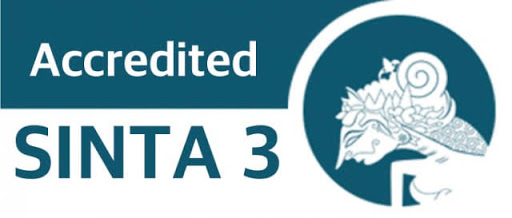We might need a little anxiety: A finding of the students' problem-solving on fraction operation
DOI:
https://doi.org/10.12928/ijei.v1i1.2316Keywords:
mathematics anxiety, Polya framework, problem-solvingAbstract
One of the factors affecting the students' mathematical problem-solving ability is the mathematics anxiety. It was commonly believed that the higher anxiety a student feels, the lower performance the student does. This research aims to describe the students' problem-solving performance on fraction operation within three levels of mathematics anxiety - the high, the moderate, and the low anxiety. In this research, we selected six subjects by administering a questionnaire. The subjects - representing each of the anxiety levels - engaged in a problem-solving test on fraction operation and then being interviewed about their problem-solving process based on Polya framework. After a number of triangulations and discussions, we found that the students with high anxiety tended to ruin their problem-solving process due to somatic symptoms. We also found that the students with moderate anxiety developed a good care such that the process going well. Interestingly, the students with low anxiety did not carefully solve the problems and made some mistakes in calculation. A simple question might be addressed for future research. Does anxiety sometimes develop a good alert that makes the student careful about their problem-solving steps?
References
Al Mutawah, M. A. (2015). The influence of mathematics anxiety in middle and high school students math achievement. International Education Studies, 8(11), 239-252.
Ansari, B. I., & Saleh, M. (2019). Pengaruh collaborative teaching dan pengetahuan awal terhadap kecemasan matematis siswa. JIPMat, 4(2).
Hadi, S., & Radiyatul, R. (2014). Metode pemecahan masalah menurut polya untuk mengembangkan kemampuan siswa dalam pemecahan masalah matematis di sekolah menengah pertama. EDU-MAT: Jurnal Pendidikan Matematika, 2(1), 53-61.
Hidayat, R. (2018). Kontribusi mathematics anxiety terhadap kemampuan akademik mahasiswa pada pembelajaran kalkulus. JNPM (Jurnal Nasional Pendidikan Matematika), 2(2), 206-216.
McIntosh, R., Jarrett, D., & Peixotto, K. (2000). Teaching mathematical problem solving: Implementing the vision. Retrieved from: http://citeseerx.ist.psu.edu/viewdoc/download?doi=10.1.1.113.1169&rep=rep1&type=pdf.
Nurrizbaeni, N., & Setiawan, W. (2019). Analisis kemampuan pemecahan masalah matematik siswa kelas X pada materi persamaan dan pertidaksamaan nilai mutlak. Journal on Education, 1(3), 327-336.
Polya, G. (2004). How to solve it: A new aspect of mathematical method (Vol. 85). Princeton University Press.
Ramirez, G., Chang, H., Maloney, E. A., Levine, S. C., & Beilock, S. L. (2016). On the relationship between math anxiety and math achievement in early elementary school: The role of problem solving strategies. Journal of experimental child psychology, 141, 83-100.
Syafri, F. S. (2017). Ada Apa dengan Kecemasan Matematika?. Journal of Medives: Journal of Mathematics Education IKIP Veteran Semarang, 1(1), 59-65.
Wicaksono, A. B., & Saufi, M. (2013). Mengelola kecemasan siswa dalam pembelajaran matematika. In Prosiding Seminar Nasional Matematika dan Pendidikan Matematika (Vol. 9).
Downloads
Published
Issue
Section
License
Copyright (c) 2020 Yuli Purwasih; Vita Istihapsari; Afit Istiandaru

This work is licensed under a Creative Commons Attribution-ShareAlike 4.0 International License.
Authors who publish with this journal agree to the following terms:
- Authors retain copyright with the work simultaneously licensed under a Creative Commons Attribution License that allows others to share the work with an acknowledgement of the work's authorship and initial publication in this journal.
- Authors are able to enter into separate, additional contractual arrangements for the non-exclusive distribution of the journal's published version of the work (e.g., post it to an institutional repository or publish it in a book), with an acknowledgement of its initial publication in this journal.
- Authors are permitted and encouraged to post their work online (e.g., in institutional repositories or on their website) prior to and during the submission process, as it can lead to productive exchanges, as well as earlier and greater citation of published work (See The Effect of Open Access).




